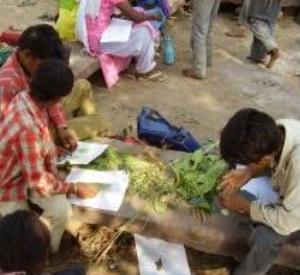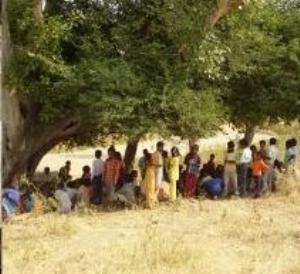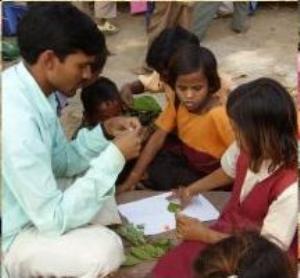Sunil Raghuvanshi
My project is aimed at enhancing children’s sensitivity towards environment and biodiversity through specially designed environment education package developed for them. It will be implemented through the 200 children of the Adharshila Middle School at my project village.

During 1998-2002, nearly 1600 families living in 24 villages inside the Kuno Wildlife Sanctuary, in the northern region of the central Indian state of Madhya Pradesh, were relocated to a site outside the Sanctuary, to create suitable conditions for reintroduction of the Asiatic Lion in Kuno. One of the reasons for the villages to agree to shift outside the Sanctuary was to enable their children to have access to good education facilities. However, the government was unable to provide quality education to these displaced households, and in 2002, Samrakshan Trust started an education project to help plug this lacuna. Since then, Samrakshan’s education programme has evolved rapidly to include not just formal education but also environment education and livelihood skills training components. The proposed project is a step towards further evolution of this work, in the interests of long-term success of the Lion Reintroduction Project in Kuno.

The Sahariya, who constitute over 90 per cent of the population of this region, have traditionally followed a mixed subsistence livelihood consisting of dryland farming, hunting and forest produce collection. While extraction of forest products is permitted in select legal categories of state-owned forests, hunting of wild animals is banned. De facto, however, these livelihood categories continue to be important to people’s subsistence in this region. Studies by Samrakshan have found that hunting continues to be a major threat to wildlife in this region, even after village relocation from the Sanctuary. Apart from livelihood requirements, another reason for high incidence of hunting is that the local community does not attribute a positive value to the local fauna and flora. This project seeks to plug this lacuna by strengthening the conservation awareness activities of the Adharshila School, to create a long-term constituency for wildlife conservation among the Sahariya.

The project will work with children in the 5-15 years age groups, who in the near future will add to hunting pressures in and around the Kuno Wildlife Sanctuary. An important long-term spin off of this project will be to reduce the intensity of human-wildlife conflict and ease the severe contests around forest resources, which have marked the history of wildlife conservation in this region.